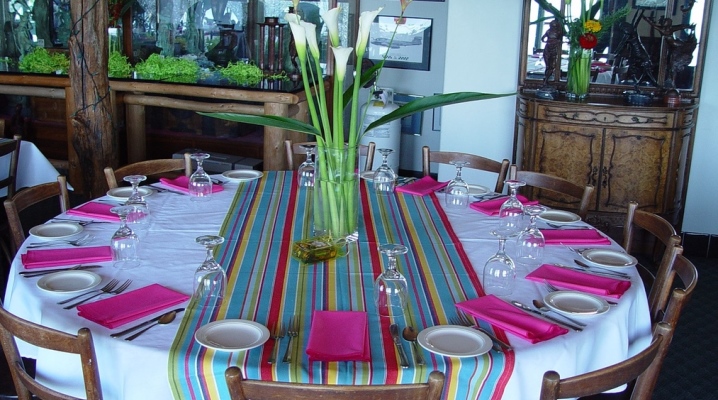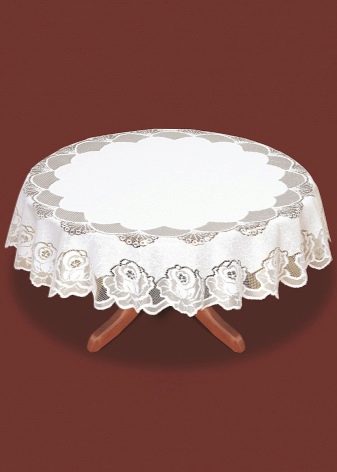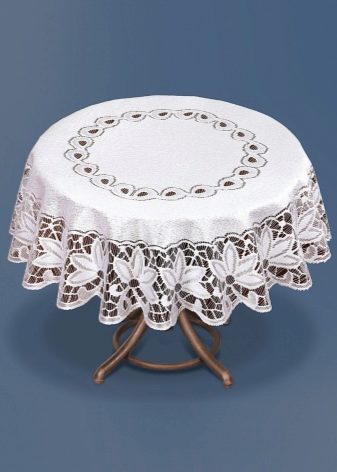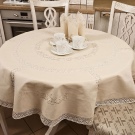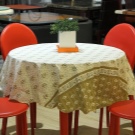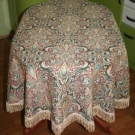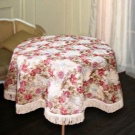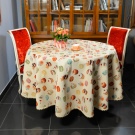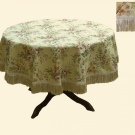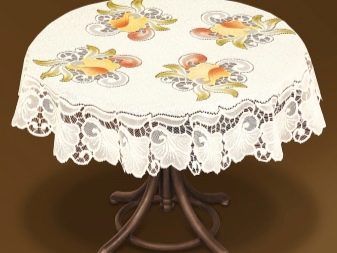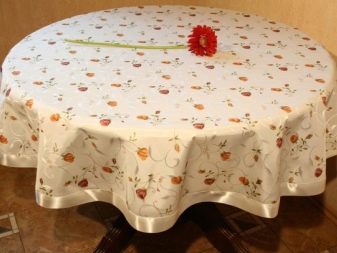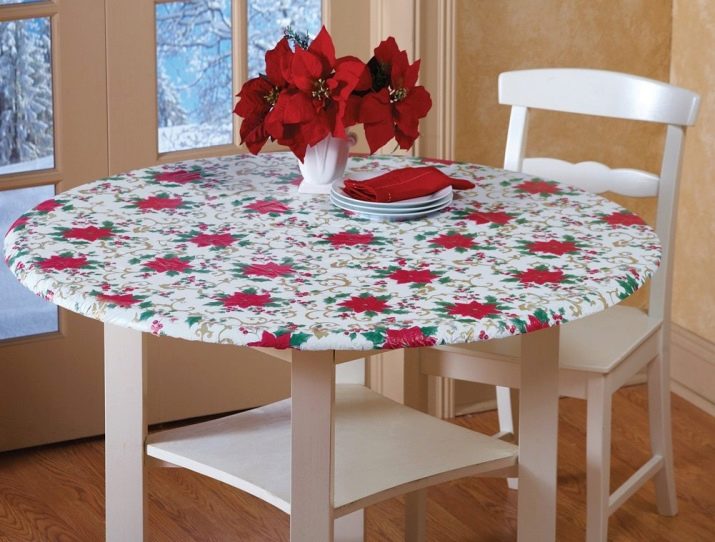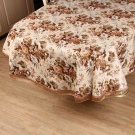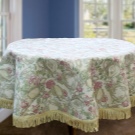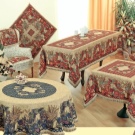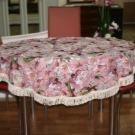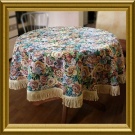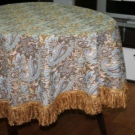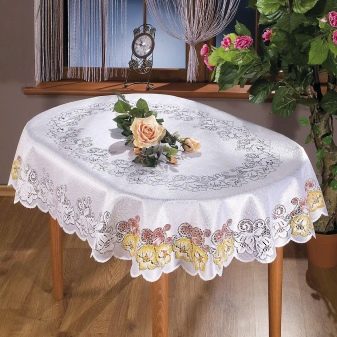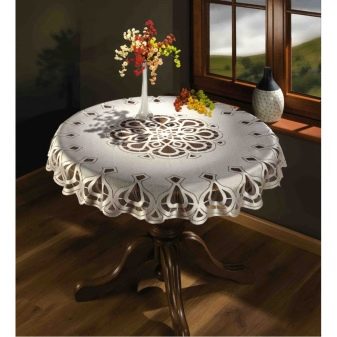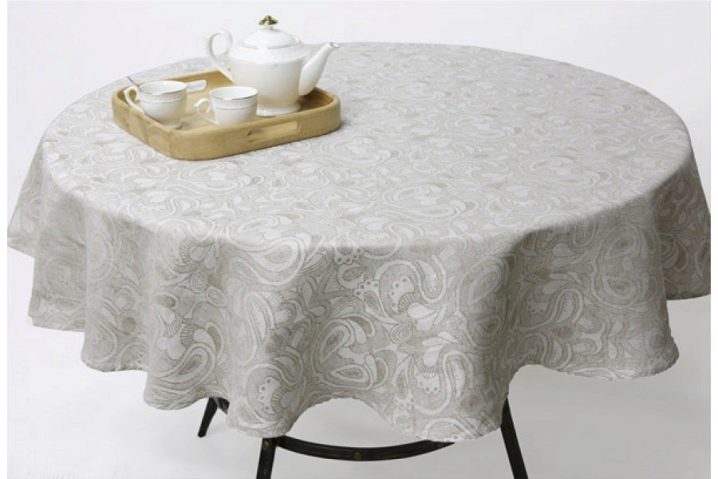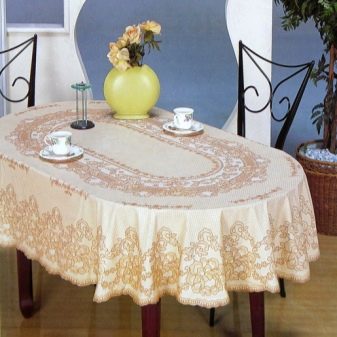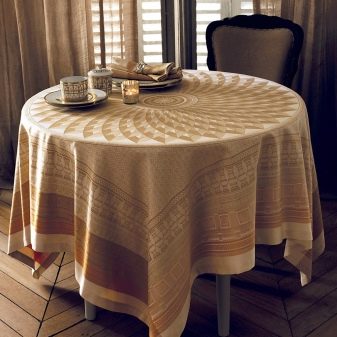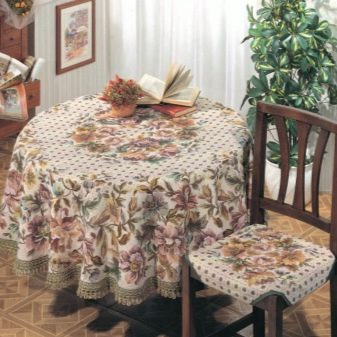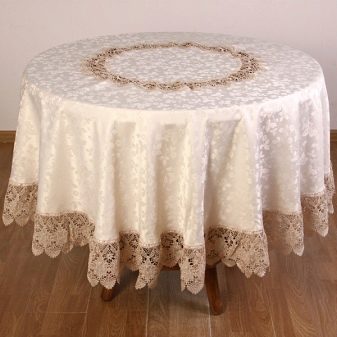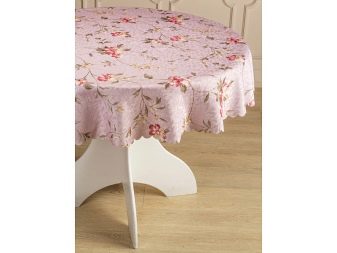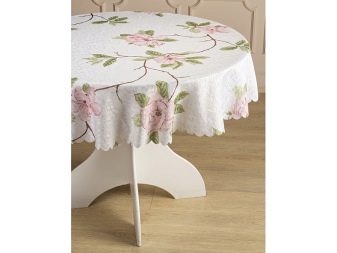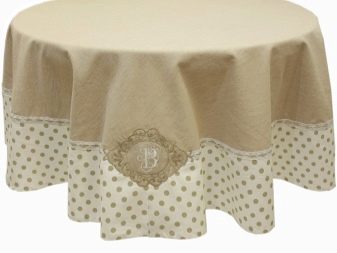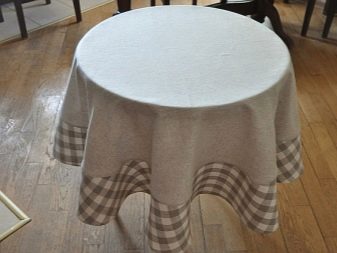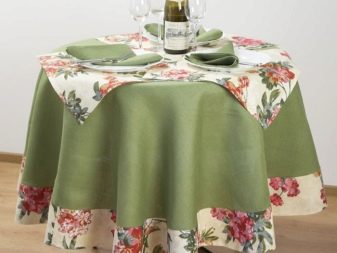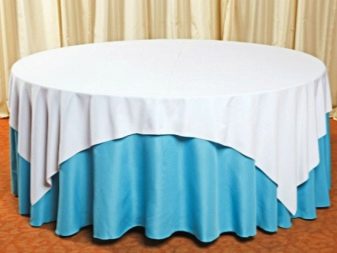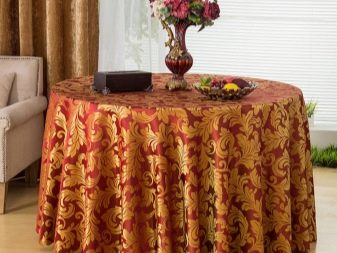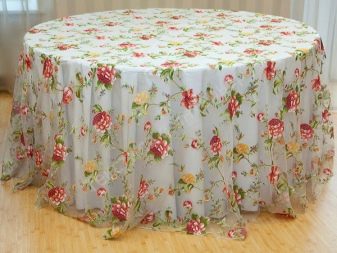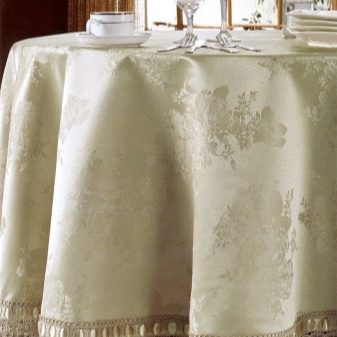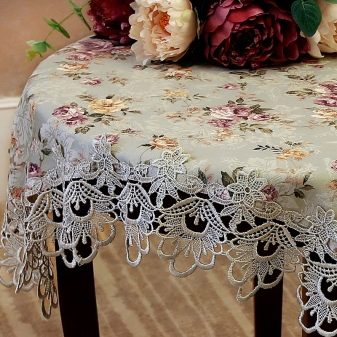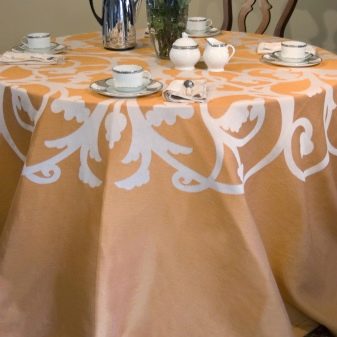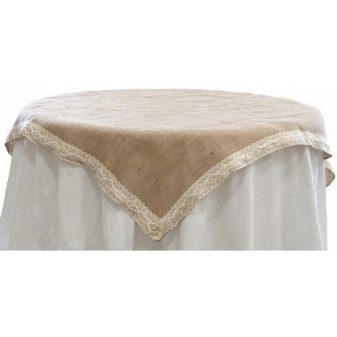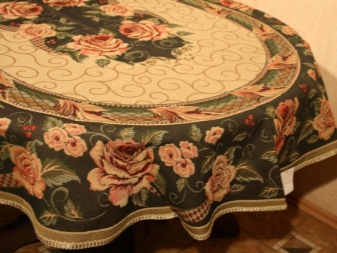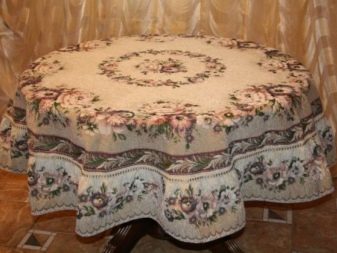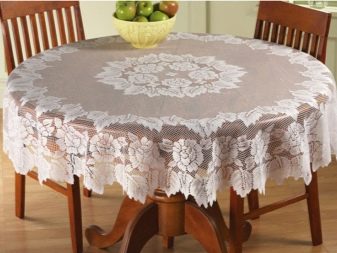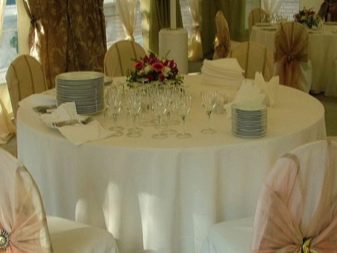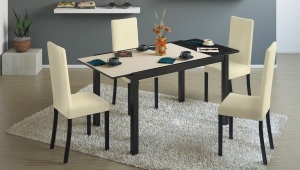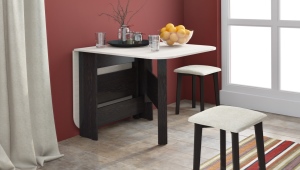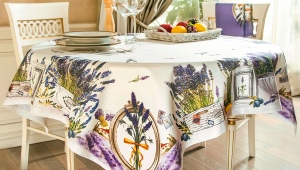Round tablecloth for the kitchen table
Previously, the tablecloth was considered a luxury item, and it was decided to lay it only for holidays. Today, this household item is in every home, and often not in one copy. A round tablecloth for a kitchen table, depending on the destination, can have a diverse design and material of execution.
Modern technologies allow to use for decorating the table the most diverse texture, which has a dirt-and water-repellent ability. With such a tablecloth, the kitchen table and the whole kitchen will look neat and elegant.
Types and materials
All tablecloths, including round ones, can be divided into two types:
- for everyday life
- for special occasions.
Practical and non-marking materials are used for the everyday decoration of the table. Many of them possess water-repellent impregnation. They may be decorative. For example, a round napkin can be laid with a second layer on the table,so as not to stain the main tablecloth. Variants of materials for everyday consumption:
Tiled tablecloth
She certainly is in every home. Since its price is not very high, you can have several different copies of oilcloth. Often, it does not look very attractive, but it perfectly protects the table from all sorts of stains that are inevitable evil in the kitchen. Thanks to its water-repellent properties, the oilcloth can be laid on the summer kitchen and on the table on the street, without fear that the rain will soak it.
Polyester
A very practical option for daily use. Today, the stores offer many colors and decors. Tablecloths made of polyester not only do not absorb moisture - they do not leave stains, besides you can pick up a copy with a decorative pattern that will be pleasing to the eye. Polyester is easily erased in a typewriter, does not require ironing, does not fade and does not fade in the sun. However, he is afraid of high temperatures and therefore a hot kettle and other items should not be put on such a tablecloth. Also, do not cut bread and other products on them - sharp objects can damage the tablecloth.
Cotton
A round cotton cloth can also be used as a festive option - it is only important to choose the right design. In addition, this material is not flammable and does not cause allergies due to its natural origin. Pure cotton tablecloth is not very practical for daily use - it gets dirty quickly and will have to be changed and washed frequently. In addition, this material may shrink during washing, so choosing the diameter of the tablecloth for a round table, you should take this moment into account and take a margin of about 10 cm. To keep the color of the fabric saturated, you need to iron it from the inside.
Teflon
Teflon tablecloths are durable and look very nice. They are not afraid of high temperatures - you can safely put on it a hot pan or pan. Teflon tablecloth does not absorb dirt, is not afraid of water and fatty spots. In addition, it does not slide on the surface, so you can not be afraid for the safety of your service.The material drapes well and will look great in a round version.
Festive tablecloths always look very elegant. They are sewn from expensive materials, often of natural origin. Decorate such tablecloths with lace, hand embroidery or other lush decor. They are often handed down from generation to generation and taken from the depth of the cabinet in exceptional cases. On sale there are various thematic models: Easter, Christmas wedding, with a children's focus - there can be a great variety of options. For such models use the following materials:
Linen
Models of this natural material look great and belong to the premium class. It was customary to decorate such tablecloths with embroidery and add them to the bride’s dress, which was supposed to tell about her noble origin. The wedding table on the summer veranda will look very stylish and presentable. In addition, flax, unlike cotton, is more durable and with proper care will last more than one year. Handle such a thing should be carefully and carefully - flax shrinks and is difficult to remove stains.
Jacquard
The trick of such models is that they are two-way.The front and seamy sides can differ not only in color, but also in pattern. So, in fact, you can get two different tablecloths in one version. Textiles from this material looks expensive and solemn. It will be a great gift for a wedding, birthday and other reasons. Jacquard has a dense texture and does not wear out after numerous washes.
Silk
Silk models for the table are almost never used by themselves - this is a very expensive and capricious material. In addition, silk is very impractical - it is thin, it is easily torn and absorbs odors and dirt. Therefore, tablecloths made of it are used as a decorative element for serving the holiday table. Silk cover with embroidery or sewing looks great in a set with a round model of more practical cotton or even polyester. Thanks to its brilliant surface, silk is able to transform the whole room and create an atmosphere of celebration and celebration. A family can gather at such a table for a special occasion.
Natural silk is now a rather rare phenomenon. In addition, its cost is quite high. Silk from cellulose is mainly found - it can also be classified as natural.products. Products from real silk are quite durable and have a long service life.
Jute (burlap)
This material is universal, so it can decorate your table not only on holidays. You can calmly admire it every day. The fabric is quite thick and durable. Looks great in the interior of the country or Provence. However, for safety net it is better to decorate it on top with napkins and to insure with coasters under the hot.
Tapestry
This tablecloth will give the serving a somewhat pompous look. This decoration for the kitchen in a classic or ethnic style. The texture of the fabric is quite dense. A round tablecloth of tapestry is traditionally decorated with a floral pattern - a large pattern in the middle, and a smaller repeating pattern - along the entire diameter from the bottom.
Festive tablecloths are often used with an extra napkin of more practical fabric, such as jacquard. So the edges of the main product remain visible, and its center is reliably protected from the appearance of stains.
